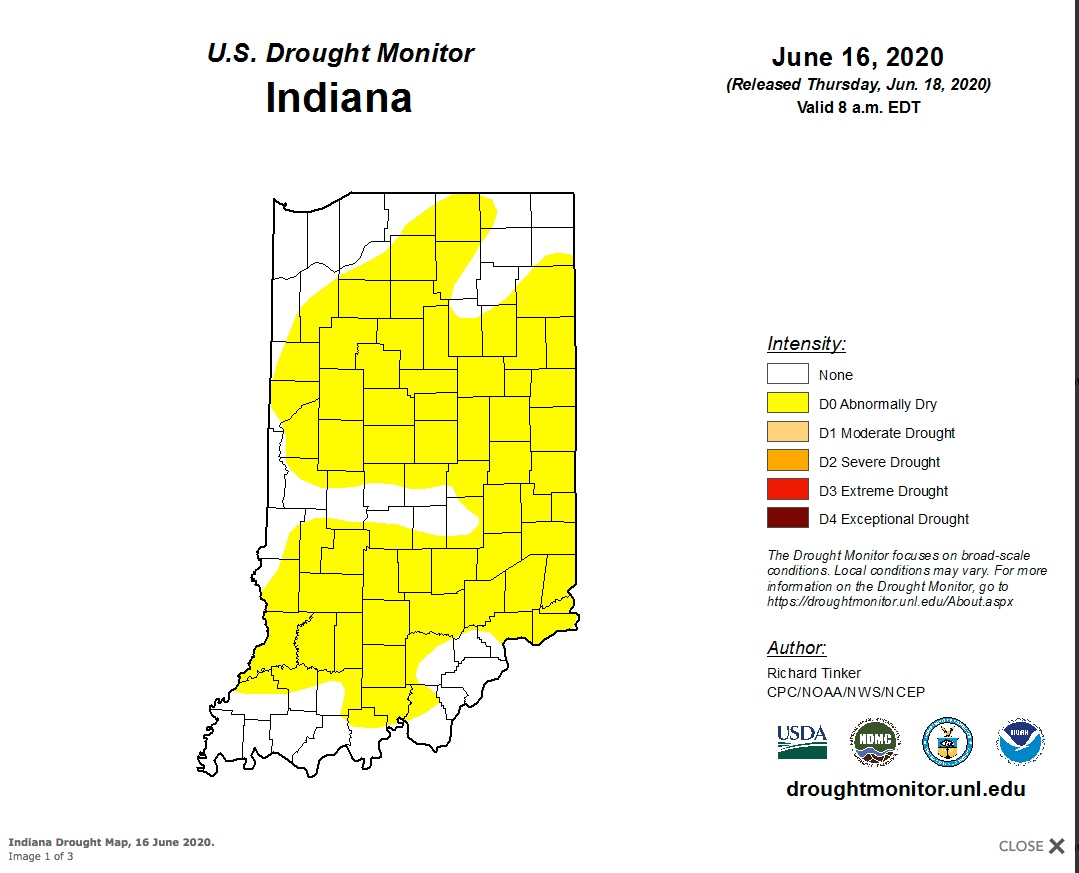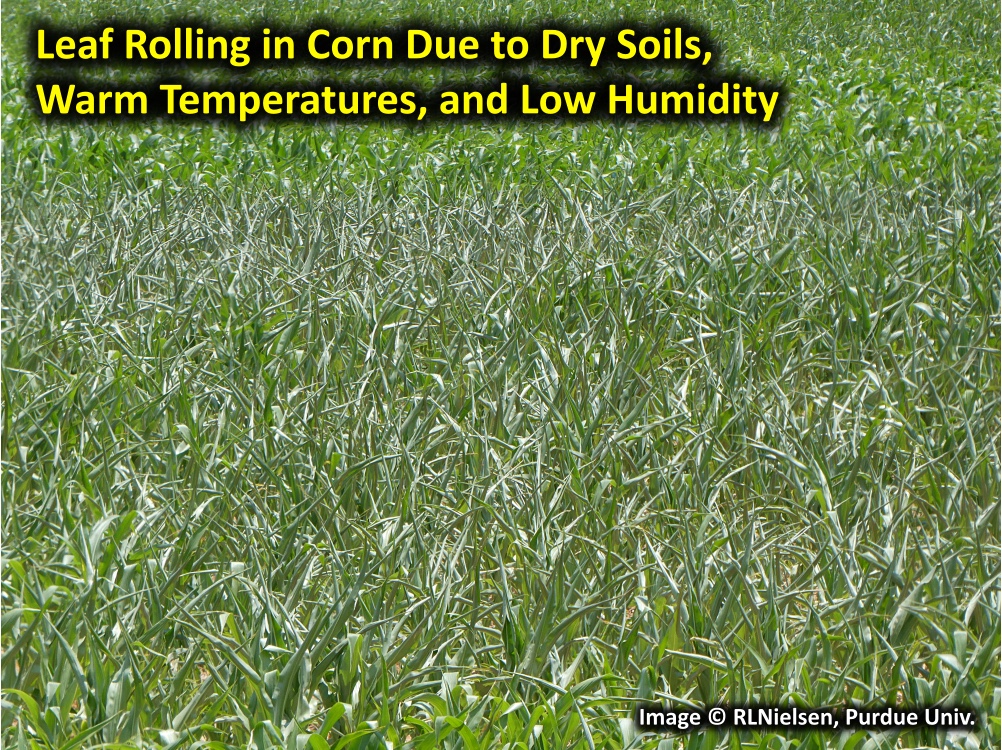Early season dry periods are historically not that common for the Eastern Corn Belt of the U.S. Usually, farmers and agronomists complain about too much rain during stand establishment and early vegetative periods. However, at the moment, conditions throughout Indiana have become stressfully dry over the past several weeks and much of the state was rated as “abnormally dry” by the U.S. Drought Monitor ratings as of mid-June (Fig. 1).

Fig. 1. U.S. Drought Monitor – Indiana, as of June 16, 2020.
Source: https://droughtmonitor.unl.edu/
What does this mean for young corn when most of the state’s crop is not much farther along than about the 8-leaf collar stage of development and in the early stages of the rapid growth period? Good question. The answer is, as you might expect… “It depends”.
Possible Consequences of Early Season Dryness
Early season dryness can be beneficial to young, developing corn plants. As I mentioned earlier, too often in the Eastern Corn Belt the bigger issue in May and June is excessive rainfall that saturates or even ponds the soil, resulting in stunted root development or outright death. Stunted root development includes the restriction of roots to shallow soil depths because deeper depths tend to stay excessively wet longer. Dry, or even unusually dry, soil conditions during the early stages of vegetative development can encourage, or allow, deeper initial rooting of young corn plants. Deeper initial rooting can pay dividends later in the season when conditions more frequently turn hot and dry.
When soil near the surface becomes excessively dry at the time when initial nodal root development of young corn plants (V2 ~ V6) is occurring, the young roots may desiccate and die. One consequence of such early season dryness is the development of “rootless” or “floppy” corn and potential loss of plant population (Nielsen, 2019)
Truly severely dry soils early in the season, coupled with warm sunny days, can limit water uptake by the young plants to the extent that photosynthesis is compromised. An outward symptom that is common around the state these days are young corn plants rolling their leaves in response to the leaf stomates closing as the plants try to slow transpiration of moisture through the plants. While the reduction in transpiration can be initially beneficial to the stressed plant, the closed stomates also result in less carbon dioxide being taken in by the leaves and this contributes to a reduction in photosynthesis (translation: “not good”).
The impact of the leaf rolling and the associated reduction in photosynthesis takes its toll on young corn plants by either stunting eventual plant development (shorter plants, smaller leaves) or restricting ear size potential (ovule formation during the rapid growth period). Of course, truly severe drought conditions can kill young corn plants outright, too.
So, potential grain yield reduction due to early season dryness can result from (1) outright loss of plant population due to death, (2) loss of potential kernel numbers before pollination (i.e., ovule formation), and/or (3) & (4) loss of surviving kernels after pollination (i.e., abortion of young kernels) or decreased kernel weight during grain fill due to smaller plants (smaller “factories”) and inadequate photosynthetic “output”.
Which of these consequences occur depends on the severity and duration of the early season dryness and what happens the remainder of the season. That’s why “it depends”.
Related References
Nielsen, R.L. (Bob). 2019. “Rootless” or “Floppy” Corn Syndrome. Corny News Network, Purdue Extension. http://www.kingcorn/news/timeless/FloppyCorn.html [URL accessed June 2020].
The National Drought Mitigation Center. 2020. United States Drought Monitor. A partnership between the National Drought Mitigation Center at the University of Nebraska-Lincoln, the United States Department of Agriculture, and the National Oceanic and Atmospheric Administration. https://droughtmonitor.unl.edu/ [URL accessed June 2020].




